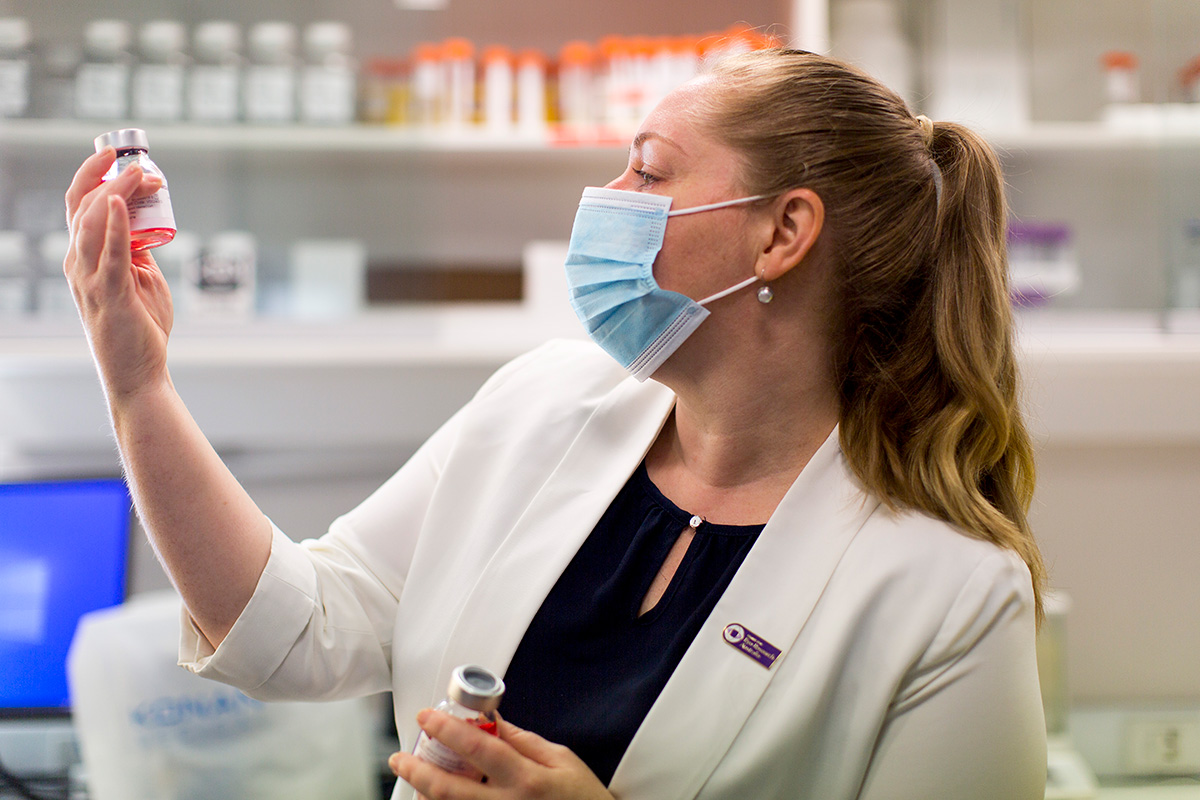This website uses cookies so that we can provide you with the best user experience possible. Cookie information is stored in your browser and performs functions such as recognising you when you return to our website and helping our team to understand which sections of the website you find most interesting and useful.
News
Leading LEDS’ next chapter
Dr Heather Machin, the new Head of the Lions Eye Donation Service, has a clear vision for the future of eye banking.
Dr Heather Machin is looking to future trends in eye banking as she steps into the role of leading the Lions Eye Donation Service (LEDS).
She has been appointed the new Head of LEDS, following Dr Graeme Pollock OAM who retired in August after founding the eye bank in 1991.
“It’s an exciting time around the world in eye banking with lots of opportunities, and I’m looking forward to helping bring the latest practices and technology to benefit Victorian patients and researchers,” says Dr Machin.
“Dr Pollock has built a remarkable team here at LEDS.
“I’m honoured to continue his amazing work, support the excellent team here at LEDS and keep collaborating with CERA and the Victorian Eye and Ear Hospital.”

Global trends
Dr Machin has been at CERA for a decade and has made many contributions to eye banking both nationally and globally.
She is a Project Officer to the Eye Bank Association of Australia and New Zealand, Chair of the Global Alliance of Eye Bank Associations, representative to the Lions Clubs International Eye Banking Working Group and is a Member of the Australian Organ and Tissue Authorities Eye and Tissue Advisory Committee.
She also led the development of The Barcelona Principles, which established a global framework for the ethical recovery and use of donor tissue and is passionate about supporting local, national, and global development.
As Senior Project Manager on the Hygelix project, she has also helped researchers develop a bioengineered scaffold that makes corneal transplants easier to perform and makes the surgery accessible to more people.
As an ophthalmic nurse, she has also worked in over 30 countries, previously with ORBIS International’s Flying Eye Hospital and Fred Hollows Foundation NZ.
Dr Machin says she wants to help bring the best of all the global trends to LEDS, for the benefit of Victorians who want to become a donor, local recipients waiting for a transplant, and researchers seeking access to tissue.
“We’re working towards the future of eye banking, which we’re already seeing around the world,” says Dr Machin.
“There is a movement towards future cellular therapies in the cornea, more bioengineering, greater support for biobanking, and efforts to build stronger collaborations throughout the organ and tissue community to improve awareness about donations.
“I want to bring all these new trends to LEDS and CERA, so we can have the biggest impact possible here in Melbourne.
“I’m deeply grateful to the Lions Club of Victoria for their ongoing support of our evolving, life-changing work.”
Value of donations
Dr Machin is an advocate for increasing awareness about how valuable eye donations are, and the impact they have.
Donated tissue is needed for sight-saving surgery, but it is also a crucial part of research into new treatments for many different types of eye disease.
Tissue that is used for research helps scientists understand diseases, and safely test new medicines that aim to prevent vision loss for potentially thousands of people.
“I want to bring new resources, new contacts and new collaborations to help Victorian researchers flourish.”
“I’m excited to show people the impact of donating for research. Tissue used for research can help prevent vision loss for thousands of people who benefit from new treatments and preventions.” says Dr Machin.
Dr Machin will formally start in the role in late November.

